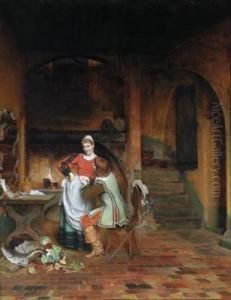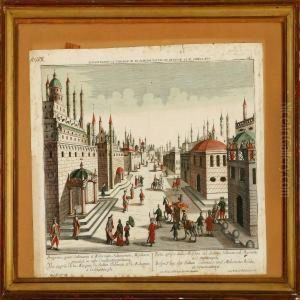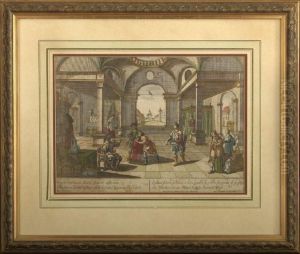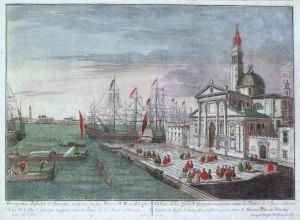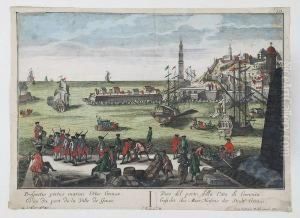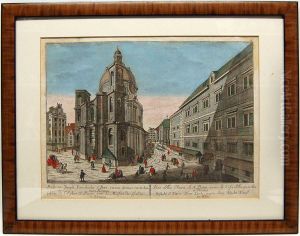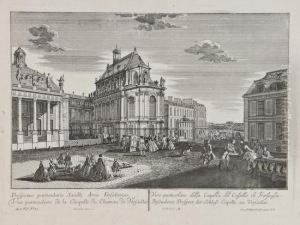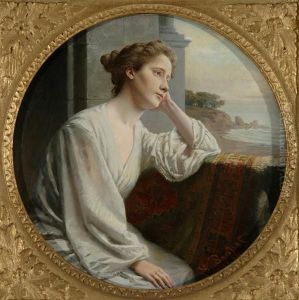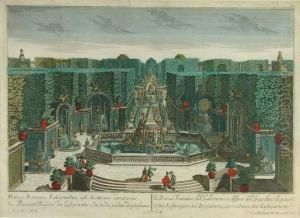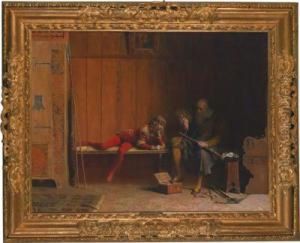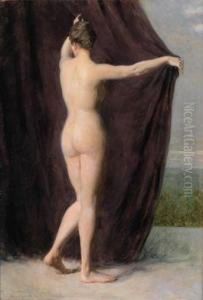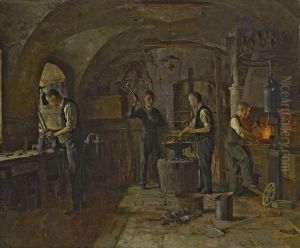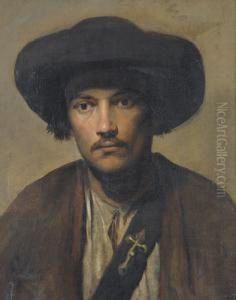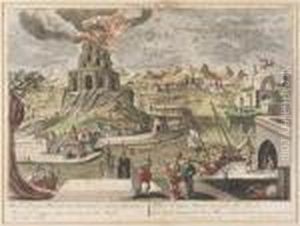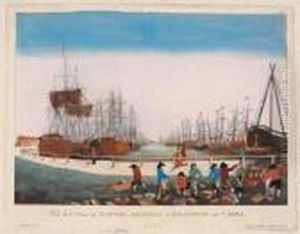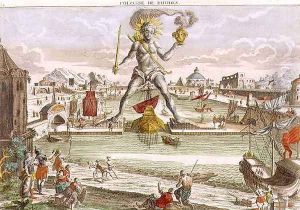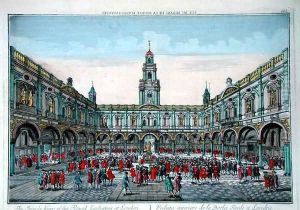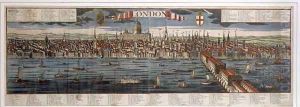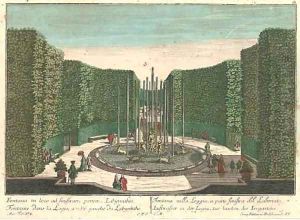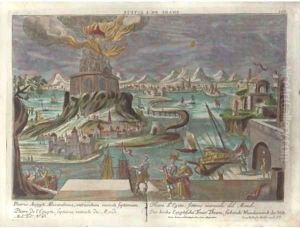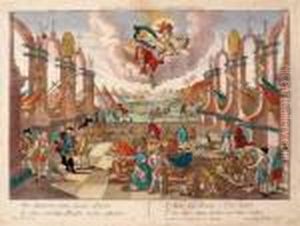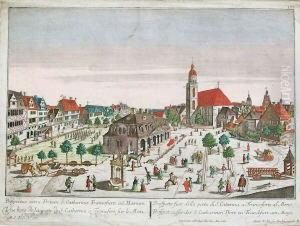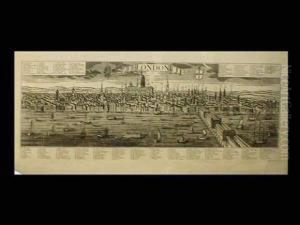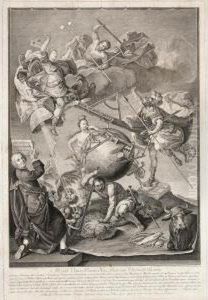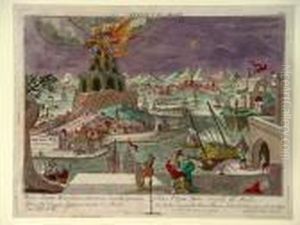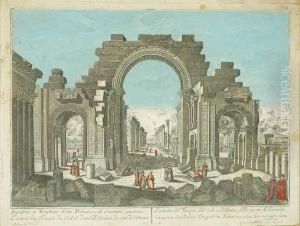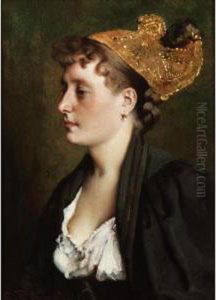Georg Balthasar Probst Paintings
Georg Balthasar Probst was an 18th-century German engraver and publisher known for his high-quality vue d'optique prints, which were designed to be viewed through a special device called a zograscope that created an illusion of depth, making the prints appear three-dimensional. Born in 1732 in Augsburg, which was then part of the Holy Roman Empire, Probst was part of a family of artists and engravers that had established a prominent workshop in the city. His father, Johann Balthasar Probst, was also an engraver, and from him, Georg Balthasar learned the trade.
Probst's work primarily involved creating prints of cityscapes, landscapes, and architectural subjects. His prints were widely distributed throughout Europe, catering to the tastes of the middle and upper classes who were fascinated by distant lands and exotic locales. These prints were not only works of art but also served as a form of visual entertainment and education about the world. Probst's engravings were known for their attention to detail and the use of vibrant colors, which were hand-applied after the printing process.
During his career, Georg Balthasar Probst expanded his family's business and continued to innovate within the field of printmaking. He became a significant figure in the world of European print publishing, not only producing his own works but also distributing prints by other artists. Probst's vue d'optique prints were particularly popular during the latter half of the 18th century, coinciding with the period known as the Enlightenment, when there was an increased interest in science, knowledge, and the exchange of ideas across Europe.
Probst passed away in 1801, leaving behind a legacy of artistic contributions that provided a window into the diverse and changing landscapes of his time. His works remain of interest to collectors and historians as they offer insights into the visual culture of the 18th century and the early forms of optical entertainment that preceded modern photography and cinematography.
